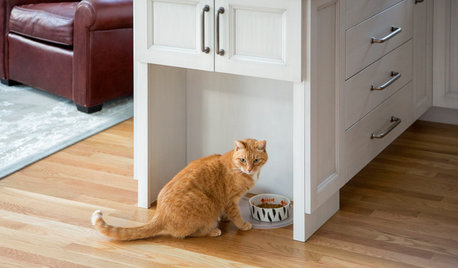Painted area lighter than rest of wall?
pbx2_gw
9 years ago
Related Stories

COLORWhy You Should Paint Your Walls More Than One Color
Using multiple colors can define zones, highlight features or just add that special something
Full Story
CABINSA Quirky Ontario Cabin Gets a Lighter Touch
Many eccentricities got to stay during this home’s redesign, but now they’re joined by better lighting, looks and functionality
Full Story
KITCHEN DESIGNRelocated Colonial Kitchen More Than Doubles in Size
Putting the kitchen in a central location allows for a big boost in square footage and helps better connect it with other living spaces
Full Story
DECORATING GUIDES10 Ideas for a Lighter, Brighter Living Room
Give your space a boost all year round by making the most of every bit of daylight
Full Story
GARDENING AND LANDSCAPINGDig This Garden Shed Makeover for Less Than $300
New paint, accessories and raised vegetable beds turn a drab outpost into a colorful charmer
Full Story
DECORATING GUIDESRoom of the Day: Lighter Look for a Townhouse Great Room
Built-in cabinets consolidate media equipment and collectibles. Beach-cottage-style touches create a relaxing vibe
Full Story
BEFORE AND AFTERSA ‘Brady Bunch’ Kitchen Overhaul for Less Than $25,000
Homeowners say goodbye to avocado-colored appliances and orange-brown cabinets and hello to a bright new way of cooking
Full Story
DECORATING GUIDESJazz Up Your Dining Room for Less Than $500
New lighting, colorful dishware, fun fabrics and other small updates add up to a big-time facelift on a little bitty budget
Full Story
COLOR8 Ways to Rev Up Your Garden Color With More Than Just Plants
Bring energy and excitement to your outdoor space by going bold with color, from small touches to big changes
Full Story










LuisHinkle
pbx2_gwOriginal Author
Related Professionals
Greensboro Painters · Allen Painters · Lansing Painters · Oakton Painters · Vero Beach Painters · Winchester Painters · Homewood Painters · Citrus Heights Cabinets & Cabinetry · White Center Cabinets & Cabinetry · Beacon Flooring Contractors · Danbury Flooring Contractors · New Orleans Flooring Contractors · Strongsville Flooring Contractors · Washington Flooring Contractors · Alum Rock Flooring Contractorslascatx
pbx2_gwOriginal Author
pbx2_gwOriginal Author